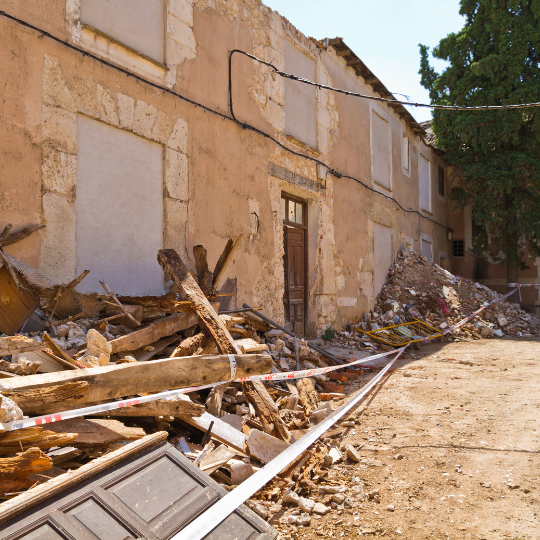Demolition Strategies: Why Sanford's Future Relies on Smart Urban Planning
In reshaping Sanford’s future, the intricate dance between progress and preservation takes center stage. Unveiling the layers of a city’s potential requires strategic demolition, a delicate art where the old makes way for the new. In this exploration, we dissect the pivotal role of smart urban planning in Sanford’s metamorphosis. Demolition, often seen as a mere wrecking ball affair, becomes an artful symphony when harmonized with foresight and innovation. Join us in navigating the maze of Sanford’s urban evolution, where every toppled brick lays the foundation for a brighter tomorrow. It’s not just about tearing down; it’s about sculpting the future with wisdom and vision.
Understanding Sanford’s Historical Fabric
Unveiling Sanford’s Roots
Sanford’s historical roots reach deep into the annals of time, dating back to its founding in the 19th century. Originally established as a hub for transportation and commerce, Sanford’s strategic location along the St. Johns River fueled its early growth. The city’s historic downtown, adorned with century-old buildings, tells a story of resilience and adaptation through the changing tides of time.

Key Landmarks and Structures
Within Sanford’s historical fabric, there are landmarks that stand as witnesses to the city’s evolution. The Henry Shelton Sanford Memorial, a tribute to the city’s founder, stands proudly, embodying the vision that set the stage for Sanford’s development. The Sanford Residential Historic District, featuring Victorian and Colonial Revival-style homes, adds a touch of architectural elegance to the cityscape.
Unique Identity Through Architecture
The architectural tapestry of Sanford is a blend of various styles, from the quaint simplicity of the Old Sanford Grammar School to the grandeur of the Higgins House. Each structure contributes to the city’s unique identity, reflecting the tastes and aspirations of the eras they represent. The preservation of these architectural gems becomes paramount in maintaining the authenticity that defines Sanford.
Preserving the Essence
Understanding Sanford’s historical fabric goes beyond recognizing physical structures; it involves preserving the essence of the community. The cultural events, traditions, and stories passed down through generations contribute to the intangible heritage that makes Sanford more than just a city—it’s a living, breathing testament to its past.
The Need for Urban Renewal
Challenges Faced by Sanford
Sanford, like many cities with a rich historical past, grapples with the challenges of outdated infrastructure. Aging buildings, obsolete facilities, and inefficient layouts hinder the city’s ability to keep pace with the evolving needs of its residents. Inadequate transportation systems, energy inefficiencies, and an overall lack of functionality in certain areas pose hurdles to Sanford’s progress.

The Importance of Revitalization
Revitalizing outdated structures and spaces is not merely about cosmetic enhancements; it’s about ensuring the city’s functionality and relevance in the contemporary world. Sanford’s charm lies in its history, but for the city to thrive, it must adapt. By breathing new life into old buildings and spaces, Sanford can retain its unique character while meeting the practical needs of its residents.
Meeting Modern Societal Demands
The demands of a modern society are dynamic and multifaceted. Sanford must address issues such as sustainable living, technological integration, and efficient use of space. Urban renewal provides an opportunity to retrofit existing structures, making them environmentally friendly, technologically advanced, and conducive to a contemporary lifestyle.
Preserving Cultural Heritage
While embracing modernity, it’s essential to preserve Sanford’s cultural heritage. Urban renewal should be approached with a careful balance, ensuring that historical landmarks and structures integral to the city’s identity are not lost in the process. The goal is to create a harmonious blend of the old and the new, maintaining a connection to the past while looking towards the future.
Community Involvement in Renewal Initiatives
The success of urban renewal hinges on community involvement. Sanford’s residents play a pivotal role in identifying areas that require revitalization and providing insights into the changes they envision. Engaging the community fosters a sense of ownership and ensures that renewal initiatives align with the needs and aspirations of the people who call Sanford home.
Balancing Preservation and Progress: Navigating Sanford’s Historical Landscape
Preserving the historical significance of Sanford while simultaneously fostering progress is a nuanced undertaking that requires a delicate equilibrium between honoring the past and embracing the future. In this exploration, we’ll delve into the challenges and benefits inherent in maintaining Sanford’s historical integrity, while strategically implementing demolitions to pave the way for new developments.
Challenges:
- Historical Preservation Constraints: One of the primary challenges in balancing preservation and progress lies in navigating the constraints imposed by historical preservation regulations. Sanford’s historical structures may be subject to stringent guidelines that restrict alterations or demolitions, making it challenging to implement modern developments seamlessly.
- Resistance to Change: Communities often harbor a deep attachment to their historical landmarks. Overcoming resistance to change, especially when it involves demolishing structures with sentimental value, poses a significant hurdle in the path toward progress. Effective communication and community engagement are essential to navigate this challenge.
- Financial Considerations: Preserving historical buildings can be costly, and finding a financially viable balance between restoration efforts and embracing contemporary developments can be challenging. Striking a harmonious financial equilibrium requires careful planning and consideration of long-term benefits.
Benefits:
- Cultural Identity and Community Pride: Preserving historical structures fosters a sense of cultural identity and community pride. These landmarks serve as tangible reminders of Sanford’s rich heritage, creating a connection between past and present that residents can take pride in.
- Tourism and Economic Opportunities: Well-preserved historical districts can attract tourists and contribute to economic growth. Adaptive reuse of historic buildings for tourism-related purposes, such as museums, can generate revenue and create job opportunities, contributing to the overall prosperity of the city.
- Architectural Diversity: Maintaining historical integrity does not mean stagnation. It allows for a diverse architectural landscape that seamlessly blends the old with the new. Striking a balance between preservation and progress can result in a cityscape that tells a comprehensive story of Sanford’s evolution over time.
Strategic Demolitions:
- Identifying Redevelopment Opportunities: Strategic demolitions should be guided by a comprehensive assessment of the city’s needs. Identifying areas with the potential for redevelopment while preserving the essence of Sanford’s historical core is essential for maintaining the delicate balance.
- Implementing Sustainable Practices: Demolitions, when necessary, should embrace sustainable practices to minimize environmental impact. Recycling materials, repurposing demolished elements, and adopting eco-friendly construction methods contribute to a responsible urban development approach.
- Collaborative Planning: Collaboration between urban planners, preservationists, and the community is paramount. Inclusive planning processes ensure that the vision for Sanford’s future is collectively shaped, taking into account diverse perspectives and fostering a shared sense of ownership.
Balancing preservation and progress in Sanford requires a thoughtful and inclusive approach. By addressing challenges, embracing the benefits of historical preservation, and strategically implementing demolitions where necessary, the city can chart a course towards a future that harmoniously weaves its rich history into the fabric of modernity. The key lies in navigating this delicate balance with foresight, community involvement, and a commitment to a vibrant and sustainable future.
Sustainable Demolition Practices
In the era of heightened environmental consciousness, integrating sustainable demolition practices is paramount for Sanford’s urban planning. To minimize the environmental impact associated with demolition, the city can embrace eco-friendly strategies that prioritize resource efficiency and waste reduction. Adopting deconstruction techniques, such as salvaging and reusing materials from existing structures, becomes a cornerstone of sustainable demolition. Furthermore, the incorporation of advanced technologies, like dust suppression systems and low-emission equipment, can significantly mitigate air and noise pollution during the demolition process. Smart waste management practices, including recycling and responsible disposal, should be integral components of Sanford’s strategy. By prioritizing sustainability in demolition, the city not only aligns with global environmental goals but also sets the stage for a greener and more resilient urban landscape, fostering a legacy of responsible development for generations to come.
Community Engagement in Urban Planning
Community engagement is the linchpin of successful urban planning in Sanford. Recognizing that the residents are the heart and soul of the city, it becomes paramount to involve them actively in the decision-making process regarding development and demolition strategies. By fostering open dialogues, soliciting input, and incorporating the diverse perspectives of Sanford’s community members, planners can tap into invaluable local knowledge and ensure that proposed changes align with the needs and aspirations of the people who call the city home. This inclusive approach not only strengthens the social fabric but also creates a sense of ownership and pride, making the urban planning process a collaborative venture that reflects the collective vision of the community. In essence, the success of Sanford’s future development hinges on the active involvement of its residents, transforming them from mere observers to active contributors in shaping the city’s destiny.
Conclusion
The future of Sanford hinges on the implementation of intelligent urban planning strategies. Through careful consideration and collaborative efforts, we can steer our city towards sustainable growth and development. By adopting innovative demolition strategies, we not only address current challenges but also pave the way for a more vibrant and resilient community. It is imperative that we continue to prioritize smart urban planning to create a cityscape that reflects our commitment to progress, environmental consciousness, and the overall well-being of our residents. Together, we hold the power to shape Sanford’s future and ensure it stands as a testament to thoughtful and forward-looking urban development.




